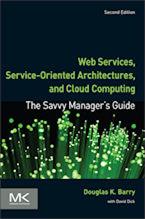J2EE EJB Server or Container
The EJB server provides an environment that supports the execution of applications developed using Enterprise JavaBeans™ (EJB) components. It manages and coordinates the allocation of resources to the applications. Enterprise beans typically contain the business logic for a J2EE application.
The EJB server must provide one or more EJB containers. An EJB container manages the enterprise beans contained within it. For each enterprise bean, the container is responsible for registering the object, providing a remote interface for the object, creating and destroying object instances, checking security for the object, managing the active state for the object, and coordinating distributed transactions. Optionally, the container can also manage all persistent data within the object.
Enterprise JavaBeans technology supports both transient and persistent objects. A transient object is called a session bean, and a persistent object is called an entity bean.
A session bean exists only for the duration of a single client/server session. A session bean performs operations such as accessing a database or performing calculations. Session beans can be transactional, but normally are not recoverable following a system crash. Session beans can be stateless, or they can maintain conversational state across methods and transactions. A session bean must manage its own persistent data. More on Session Object Persistence.
An entity bean is an object representation of persistent data maintained in a permanent data store, such as a database. An entity object can manage its own persistence, or it can delegate its persistence to its container. See:
Context for J2EE EJB Server or Container
Related Articles for J2EE EJB Server or Container
Author
Douglas K Barry
Principal
You may use this material for your work or classes. Reprint Policy. Be sure to check the menu at the left for other articles available on this site.
The Savvy Manager's Guide
Douglas K Barry is also the author of a book that explains Web Services, service-oriented architecture, and Cloud Computing in an easy-to-understand, non-technical manner.
Web Services, Service-Oriented Architectures, and Cloud Computing: The Savvy Manager's Guide (Second Edition)
by Douglas K Barry with David Dick
This is a guide for the savvy manager who wants to capitalize on the wave of change that is occurring with Web Services, service-oriented architecture, and—more recently—Cloud Computing. The changes wrought by these technologies will require both a basic grasp of the technologies and an effective way to deal with how these changes will affect the people who build and use the systems in our organizations. This book covers both issues. Managers at all levels of all organizations must be aware of both the changes that we are now seeing and ways to deal with issues created by those changes.

